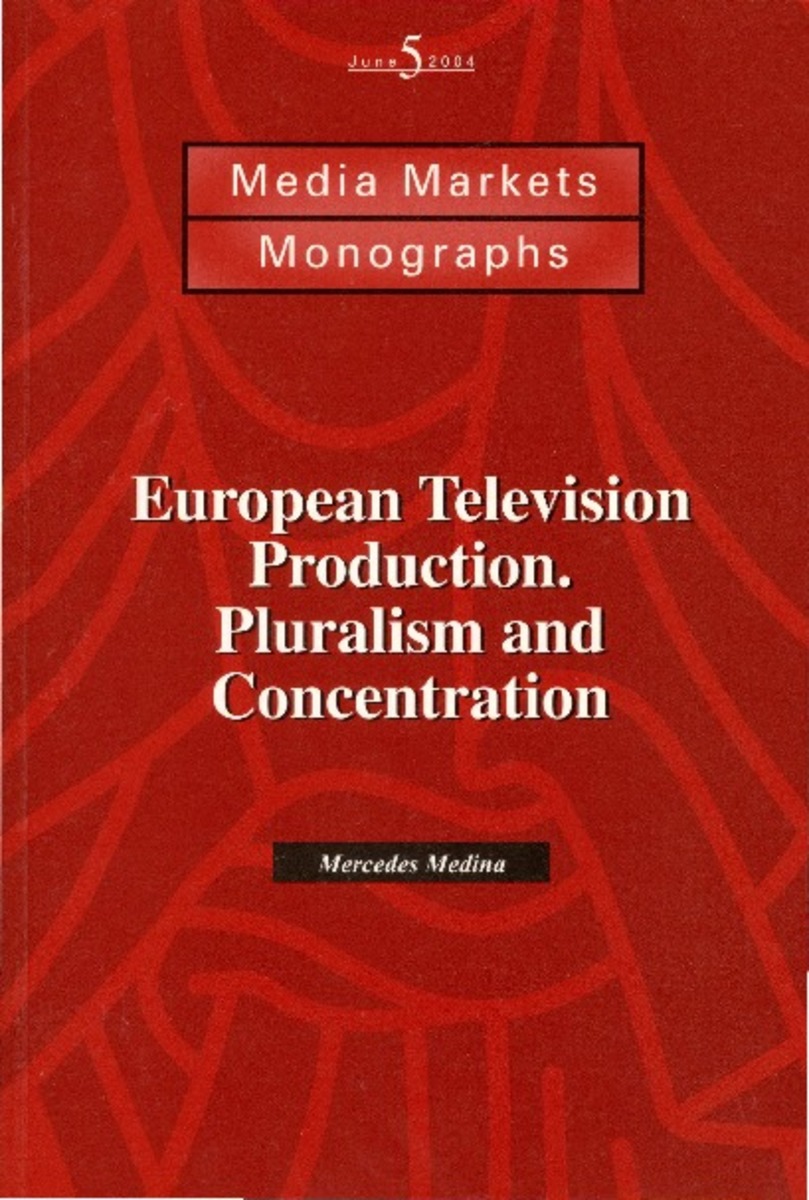Full metadata record
| DC Field | Value | Language |
|---|---|---|
| dc.creator | Medina, M. (Mercedes) | |
| dc.date.accessioned | 2004 | - |
| dc.date.available | 2004 | - |
| dc.date.issued | 2004 | - |
| dc.identifier.citation | Medina, M. (Mercedes). "European Television Production: Pluralism and Concentration". : , 2004 | es |
| dc.identifier.isbn | 1695-310X | - |
| dc.identifier.uri | https://hdl.handle.net/10171/13664 | - |
| dc.description.abstract | Pluralism and cultural diversity are priority values of public communication. The European Commission understands that the objectives of content regulations must ensure that they safeguard freedom of expression, pluralism, cultural and linguistic diversity, and consumer protection in general and especially for minors. In the audiovisual field, it is assumed that pluralism will naturally be favoured as production is originated by a larger number of production companies. The EC Television Without Frontiers Directive (TVWF), 89/552, establishes some criteria through which independent producers are defined and requires all broadcasters to reserve at least 10 % of their transmission time or programming budget for European works from independent producers. The research hypothesis of this book can be summed up as follows: in order to guarantee pluralism in the audiovisual field it is also necessary to look at the power of influence of the producers of television programs. In this research, power is identified with audience share in terms of ratings figures for television programming at prime time and the vertical integration between the producers of those programmes and the television channels or companies that broadcast them. European countries have adopted the EC principals in favour of pluralism and diversity. In this sense, each country establishes measures to impede market concentration and positions of dominance. Hence, the final aim will be to analyse whether ownership independence from production is enough to guarantee pluralism and to avoid dominant market power. In the European television market, it is necessary to pay attention to the crucial role that public channels play in the audiovisual market. In this investigation we want to verify, among other things, if the existence of public television has really contributed to the development of independent production and to pluralism in the countries of study. After studying the regulatory framework, we will study the structure of the European production market from 2000 to 2003 and then we will analyse the prime time programming in the leading European channels. The final conclusions will point out some proposals intended to encourage pluralism and diversity in television and new ways to guarantee the independence of content. We will seek to study the market and suggest measures that can contribute to achieving the objectives of the ED in the new industrial context, specifically, to develop a competitive and healthy audiovisual industry and to prepare to tackle the new challenges ahead and play a leading role in the creation of quality content in the new digital age. | es_ES |
| dc.language.iso | eng | es_ES |
| dc.rights | info:eu-repo/semantics/openAccess | es_ES |
| dc.subject | Pluralismo, concentración, producción audiovisual, mercado europeo | es_ES |
| dc.title | European Television Production: Pluralism and Concentration | es_ES |
| dc.type | info:eu-repo/semantics/book | es_ES |
Files in This Item:
Statistics and impact
Items in Dadun are protected by copyright, with all rights reserved, unless otherwise indicated.






